Overboard: Stories from off the boat
Published on June 13th, 2019
Falling overboard can occur unexpectedly and end tragically. Staying onboard is always a priority, but even the most experienced can find themselves off the boat. During the 2019 California Offshore Race Week, Dee Caffari shares her experience.
I am, as a professional sailor, a strong advocate for safety at sea and I know when I join teams, we talk through the worst case scenarios, procedures and actions. We identify locations of safety equipment and talk about the rules for the yacht we are sailing.
It is then common practice to perform a Man Overboard. In all honesty, our practice of such a maneuver is in a very controlled environment, but, by the very fact it is being practiced allows the crew to go through the process, understand what their role is, and how to deal with it.
The rule on the boat I was sailing was to wear a lifejacket when on deck and always clip on with your tether at night. At the time of the incident, I was not clipped on with my tether. I was wearing my Spinlock Vito Deckvest with a tether attached around my waist. In my lifejacket was an Ocean Signal MOB1 AIS unit that we had registered with the vessel before the start of the race.
The night was dark, with no moon and low cloud cover. The water was approximately 13 degrees Celsius (55°F) and winds were gusting up to 30 knots. Boat speed was averaging between 16 to 22 knots and we were sailing downwind with the A4 spinnaker and a full mainsail, all pretty good for a Santa Cruz 50.
I was wearing my boots, a base layer, foul weather trousers, and a mid-layer jacket. The sea state was messy. There were some big waves, we were accelerating on the surf of some of them, but sometimes they would catch us at a different angle and roll us the wrong way.
I was trimming the spinnaker. The sheet went from the primary winch round a winch handle as a turning sheave to the weather side where I sat with my feet in the cockpit and my bottom on the combing of the high side. Being sat in the cockpit gave me a feeling of security.
It had been a bit rock and roll in motion and we had four people on watch. Four people down below off watch and navigator out of the watch system, sat at the chart table.
It was approaching midnight and we were in the process of a watch change with two people from the deck changing with two people from below. The extra people were sat in the cockpit and the navigator had just come to the companion way hatch as the incident took place.
We had a wave that knocked us into a big windward roll; I remember reaching out to the lifelines behind me to brace myself. As we came out of that windward roll, we started to heel the opposite way and the boat began to broach.
I was easing the spinnaker as smoothly as possible to avoid an override and to help the helm gain control and ensure they could bear away again. As the boat continued to heel, I remember not having anywhere to place my foot to leeward to brace myself. It was then that I felt myself falling.
I assumed I would land on the leeward side deck with my back against the lifelines. Instead I had cleared the lifelines and the next thing I knew I was viewing the boat and all the action from about 20 feet away in the water.
It felt as if this was an out of body experience and happening in slow motion. I could see the main flogging and the spinnaker flapping and people looking to drop the front sail to get the boat under control. The noise from the sails flapping and from the water around me prevented me hearing any voices.
I wanted to shout out to let them know where I was and that I was okay, but I was being pulled through the water by the spinnaker sheet that I was still holding onto. Periodically my head would be pulled under the water and I realized that I was ingesting some sea water and that I needed to make sure I took breaths when possible so I could keep my mouth shut when under water.
I then was able to take in my surroundings. My Spinlock Vito Deckvest had inflated and was keeping me buoyant; it was just the speed of the boat pulling me as I held onto the spinnaker sheet that was pulling me under the surface of the water.
It was at this time I realized this must be the moment people choose to stop holding on, to let go and float and wait for the boat to return.
In my mind, I had no such thoughts. We were racing, I had caused an incident by being in the water and the quicker I could get back, the quicker we could be on our way. I was embarrassed for being in the water. I was annoyed with myself and frustrated that I was the cause of concern and panic for the rest of the crew.
I knew I had to try and get back to the boat myself. I considered pulling myself along the spinnaker sheet and realized that it was not possible. The boat had slowed down but it was still too much force to pull against and then I would risk losing my grip.
So, I decided to try and kick for the aft quarter of the yacht. At the same time I was flailing my legs around to try and move in the water, the crew onboard were dropping the spinnaker and driving the boat head to wind to slow down. This action facilitated my movement towards the back of the boat.
I was able to grab the aft stanchion of the pushpit and I saw a familiar face of one of the crew. A firm hold was put on me and I was asked if I was okay. We rotated so I had my back to the boat to allow my face to be away from any water, and both of us retained our firm holds.
I reassured the crew member I was uninjured, and I was keen to get back on the boat. It was a surprise to me how incapacitated you become in the water with an inflated lifejacket. I had really restricted vision due to the inflated bladder of the lifejacket. I was heavy due to my boots and clothes full of water, and a little out of breath from the shock of my surprise swim.
The reality is at this stage you just need to be patient. You are the casualty and you need to remain calm and compliant with any instructions you are given. There is very little you can do to help yourself without assistance from the crew onboard.
Once the spinnaker was secured down the forward hatch the crew came aft and recovered me from the water. I could sense the relief from those around me and this heightened my embarrassment.
Once sat on the aft deck, I could deflate my lifejacket to allow me more maneuverability and finally turn my AIS beacon off. This was strobing really brightly, obscuring my night vision and also causing a lot of noise on our DSC VHF that my unit had been programmed to. All exactly as you want it to.
I went below, the boat started sailing again and I changed out of my wet clothes. Looking at the electronic chart, I was recovered in four minutes. We recovered the spinnaker with no damage and only a halyard out of the mast that would need to be re-led. I was back up on deck by 0100hrs to finish the final hour of my watch.
I was surprised how calm I felt, but I had always been attached to the boat and was confident that I would be recovered back onboard. For the crew, they were busy getting the boat and sails under control and many of them were unaware of the proximity of my location.
It took a little while for us to re-hoist appropriate sails to get racing again. I was acutely aware that while I was on deck, no-one really spoke of the incident, but once I went off watch I could hear everyone talking through what happened. I knew then it was important that this was discussed.
The fault lay purely with me for not being clipped on by my tether, but when things go wrong it happens quickly. I praise the crew for their actions and the speed of recovery, and when debriefed we were able to look at what can be improved.
Fueled by adrenaline, I was not cold or hurt. Three hours later when I next came on deck for a sail change, I was cold, and I was aching all over. A hot cup of tea and some pain killers and life was good again. We finished the race at 0730hrs, and I was grateful to be able to wash and dry my kit and nurse my aches and pains before starting the next race two days later.
Editor’s note: Dee was crewing on Michael Moradzadeh’s Santa Cruz 50 Oaxaca with the incident occurring on second leg of the week, the Coastal Cup from Monterey to Santa Barbara. The team ultimately won their class in the three-stage California Offshore Race Week and finished third overall.
Michael also wrote about the incident… click here.
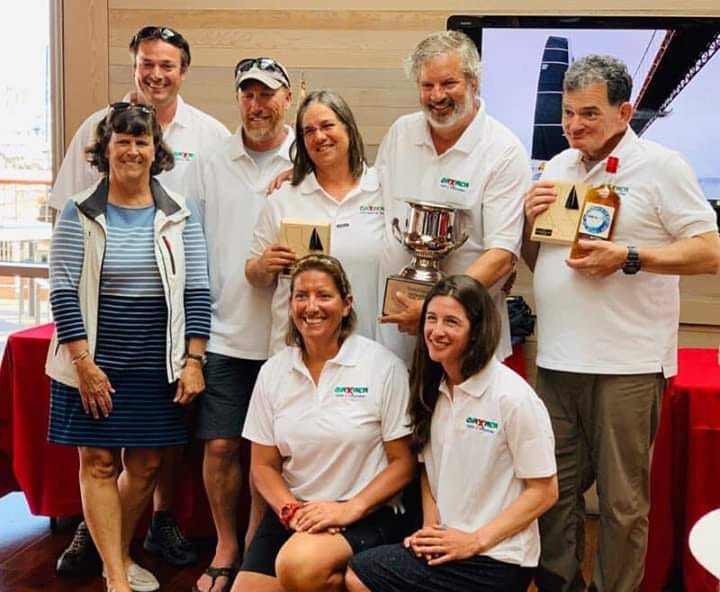
——————–
Scuttlebutt wants to feature your overboard experience. Send to editor@sailingscuttlebutt.com.


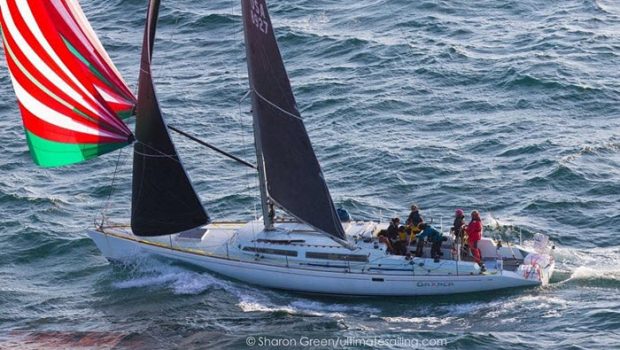


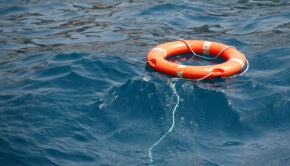
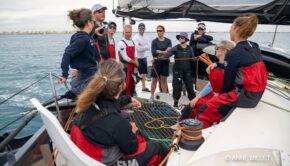
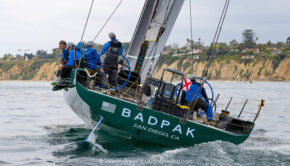
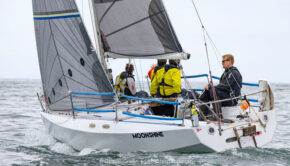
 We’ll keep your information safe.
We’ll keep your information safe.